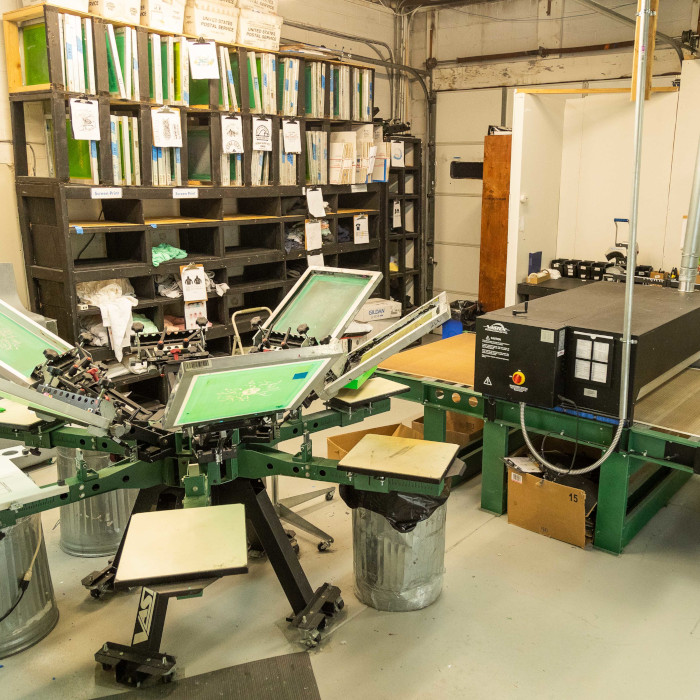In the early 2000’s, Chris Sciarra came on board at Kona Surf Company to rebrand the company. Six years ago, Chris and his father Mike began creating their own brand of surfing inspired products. Chris spearheaded the creation of the Kona apparel line. We often say we design these shirts in house, we create these shirts in house, we print these shirts in house, but what does that mean? We think the process is a unique labor of love, so we thought it would be interesting to take a moment and break it down for you.
The 1960’s is when the term screen printing was popularized by pop artists like Andy Warhol and Robert Rauschenberg but the art of screen printing is a whole lot older than you might think. For the first screen print we have to go back. Wwwaaayyyy baaack. Screen printing is basically pushing ink with a rubber slab through a screen with a stencil on it. The part of the screen that is not blocked out allows the design to transfer to pretty much whatever flat surface you want.
Andy Warhol screenprinting pop art at The Factory.
Over the years, I mean, decades – I mean, centuries! The process of getting the design on the screen has been updated. Pushing ink through a mesh fabric hasn’t changed much since the Song Dynasty around 960AD in China. Screen printing was first created by stretching silk over a wooden frame. The silk is a fine mesh that will allow ink to push through. Next, an image is hand drawn. Think, a line drawing – in one color. For every printed color in screen printing, an additional screen needs to be prepared and registered for alignment. The negative image of the drawing is hand painted on the screen with a waterproof masking medium that stops the ink from transferring through the silk.
In the early 1900’s, about 1,000 years later, the first screen printing machine was patented and printers began using chemicals that were light sensitive to create printing screens. So there you have it. The screen printing machine, a photo realistic way to get your design on the screen and inks and this whole thing was a done deal over 100 years ago.
Now computers cut out a lot of time creating designs. It will take a full color image and separate the design into the four color layers easily. Cyan, Magento, Yellow and Black layers are what it takes to produce a full color image. Most modern graphics programs will create these channels with the click of a mouse.
Here at Kona Surf Company, we always use eco-friendly inks and cleaners that are needed for creating photo realistic images for our clothing.
One pass on the screen.
Kona has tried and tested many methods of printing t-shirts. At first, Chris was pressing custom decals on shirts with a heat press. The decal is cool, but they never quite live up to expectations. Decals don’t wear or wash well. Chris wanted something timeless. Kona tried a t-shirt printer also, literally, like a laser printer that would print a t-shirt. This method is popular right now with a lot of print-on-demand places that need to do quick, in-and-out prints or one-offs. Printing a t-shirt just does not have the same classic quality of a true silk screen. The quality and clarity of the real deal comes through when you take the time to do a job right using the right tools.
Four screens - one shirt
When working in our screen printing facility, we always use high quality materials. With a full 100% cotton shirt, you’re going to get nice, even colors that are going to hold fast in the shirt. For darker shirts, we add a special mixture called Discharges that bleach the shirt. Colors really pop using discharge ink on a dark shirt. There’s a method to our madness, but in the end, we love creating high quality, printed shirts for our supporters.
Finished hoodie with some essential screen printing tools.
Call us crazy! Of all the ways to deliver a design to a t-shirt, screen printing is the most time consuming thing we do here, but we love the process! The end result is a classic, high quality shirt with a crisp, colorful design we can be proud of and is going to stand up to a good amount of wash and wear.





